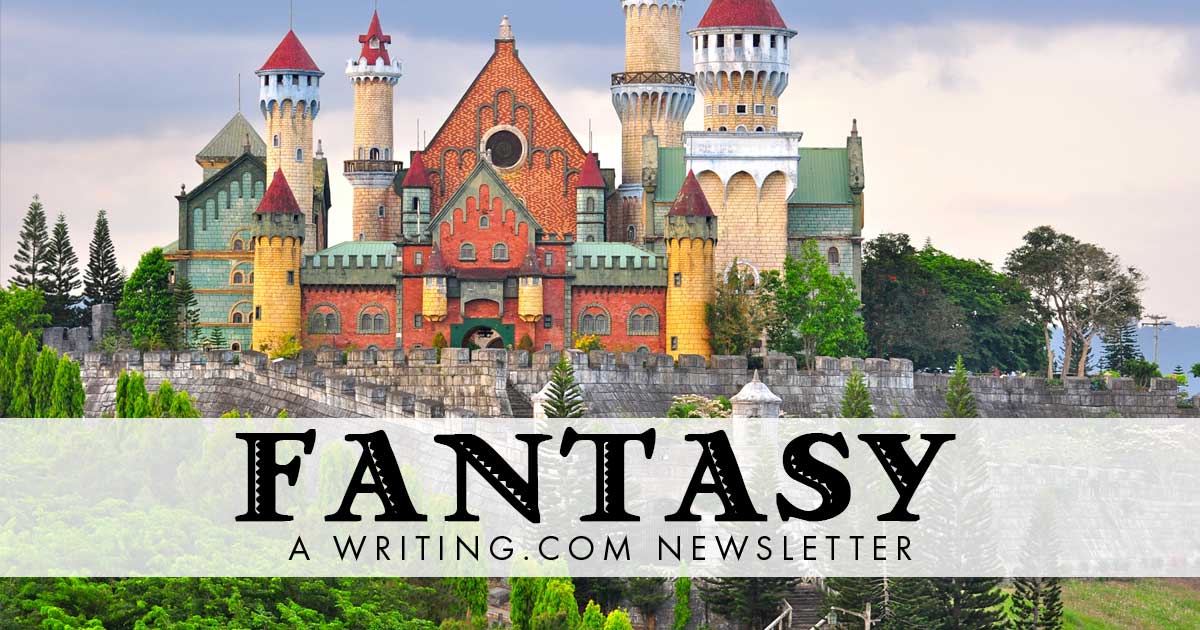This week: The Goblin Edited by: Annette  
More Newsletters By This Editor 
![Table of Contents [#401437]
Table of Contents](https://www.Writing.Com/main/trans.gif) ![Table of Contents [#401437]
Table of Contents Table of Contents](/main/images/action/display/ver/1709303267/item_id/401437.png)
1. About this Newsletter
2. A Word from our Sponsor
3. Letter from the Editor
4. Editor's Picks
5. A Word from Writing.Com
6. Ask & Answer
7. Removal instructions
![About This Newsletter [#401439]
About This Newsletter](https://www.Writing.Com/main/trans.gif) ![About This Newsletter [#401439]
About This Newsletter About This Newsletter](https://www.writing.com/main/images/action/display/ver/1709303676/item_id/401439.png)
Hello writers and readers of fantasy. I am Annette  and I will be your guest editor for this issue. and I will be your guest editor for this issue. |
![Letter from the editor [#401442]
Letter from the editor](https://www.Writing.Com/main/trans.gif) ![Letter from the editor [#401442]
Letter from the editor Letter from the editor](https://www.writing.com/main/images/action/display/ver/1709303784/item_id/401442.png)
The Goblin
As a writer of fantasy, you have the option and the obligation to immerse your readers in a wondrous world that is different from the reality of everyday life. No matter how close to reality you want to stay, in order to write fantasy, there has to be something in your story that is distinctly not something mundane.
One way to make your story into a fantasy story is to add creatures that are different from those we see every day.
An example of a creature that has come up across generations of stories, but that we haven't been able to discover in the scientific sense is the goblin. The roots of goblins in stories go roughly back to the European folklore of the middle ages. In those older stories, goblins are usually described as small, greedy, and evil spirited. This definitely puts a negative spin on the goblin species and you, as a writer, can tap into that general feeling of malaise a goblin provokes in a reader to give your story someone to fear.
Goblins and creatures similar to them are found in many cultures. In order to translate the folktales from Asia, many translators have used the word "goblin" to describe the creatures in those stories. While those translators didn't write the folktales, they shaped the way others read them by inserting goblin for the Asian monsters that haunt those tales.
Goblins are usually describes as small, but they can have any size. In a movie from 2002, a monster called "Green Goblin" is terrorizing a rich scientist until its Artificial Intelligence overtakes the scientist. In a Dr. Jekyll and Mr. Hyde style take over, the friendly scientist by day becomes a fearsome Green Goblin monster by night. This goblin is man-size and powered by an evil artificial intelligence. Instead of inventing a new word for this monster, the writers chose to use the word "goblin" to set the stage and let us know from the beginning that this thing is going to be evil. And they didn't care about the fact that a goblin should be small.
If you have ever heard or read the older versions of the Grimm's fairy tales, you will remember that they are very dark. Many things happen in those stories that aren't considered fit for children's stories by today's tastes. Just as those stories have been softened to be more palatable to modern adults, goblins have seen their evil taken away in order to make them cute and funny rather than disfigured and malicious. As a writer, you can choose to write a goblin any which way you like, it's your goblin after all.
|
![Editor's Picks [#401445]
Editor's Picks](https://www.Writing.Com/main/trans.gif) ![Editor's Picks [#401445]
Editor's Picks Editor's Picks](https://www.writing.com/main/images/action/display/ver/1709303830/item_id/401445.png)
| |  | Invalid Item 
This item number is not valid.
#2093916 by Not Available. |
|
![Word From Writing.Com [#401447]
Word from Writing.Com](https://www.Writing.Com/main/trans.gif) ![Word From Writing.Com [#401447]
Word from Writing.Com Word from Writing.Com](https://www.writing.com/main/images/action/display/ver/1709303874/item_id/401447.png)
Have an opinion on what you've read here today? Then send the Editor feedback! Find an item that you think would be perfect for showcasing here? Submit it for consideration in the newsletter!
https://www.Writing.Com/go/nl_form
![Ask & Answer [#401448]
Ask & Answer](https://www.Writing.Com/main/trans.gif) ![Ask & Answer [#401448]
Ask & Answer Ask & Answer](https://www.writing.com/main/images/action/display/ver/1709303902/item_id/401448.png)
What makes a Good Horror Story?
Vote in this poll and help to decide what makes a good horror story. After you vote, see how the others here on the site want to get scared in a horror story.
Before you ask, "Why is there a horror genre poll in a fantasy newsletter?"
*~*~*
Because I couldn't find a fantasy poll that involves goblins. Just goes to show you how scary they are.  |
![Unsubscribe [#401452]
Removal Instructions](https://www.Writing.Com/main/trans.gif) ![Unsubscribe [#401452]
Removal Instructions Removal Instructions](https://www.writing.com/main/images/action/display/ver/1709303960/item_id/401452.png)
To stop receiving this newsletter, click here for your newsletter subscription list. Simply uncheck the box next to any newsletter(s) you wish to cancel and then click to "Submit Changes". You can edit your subscriptions at any time.
|
